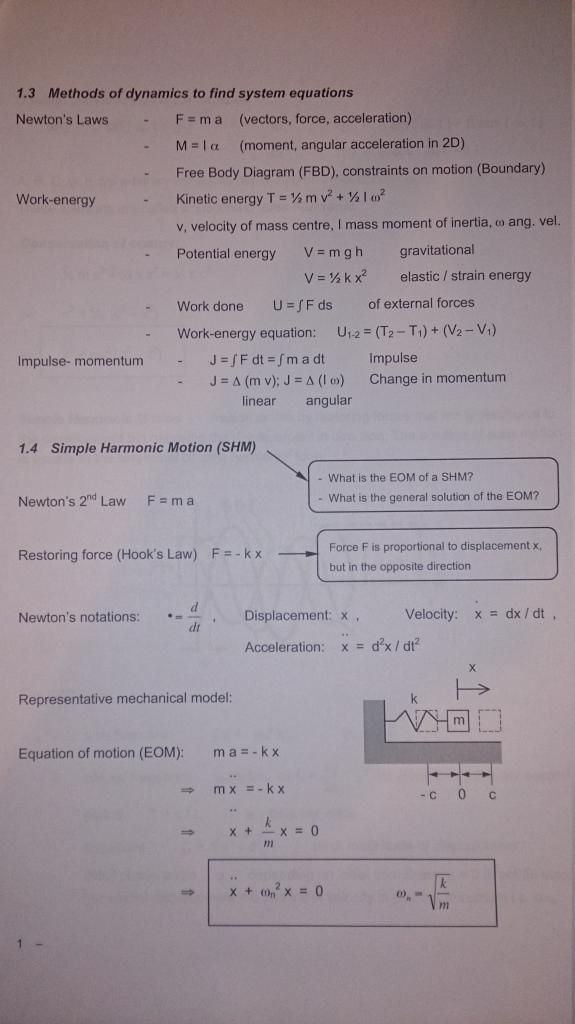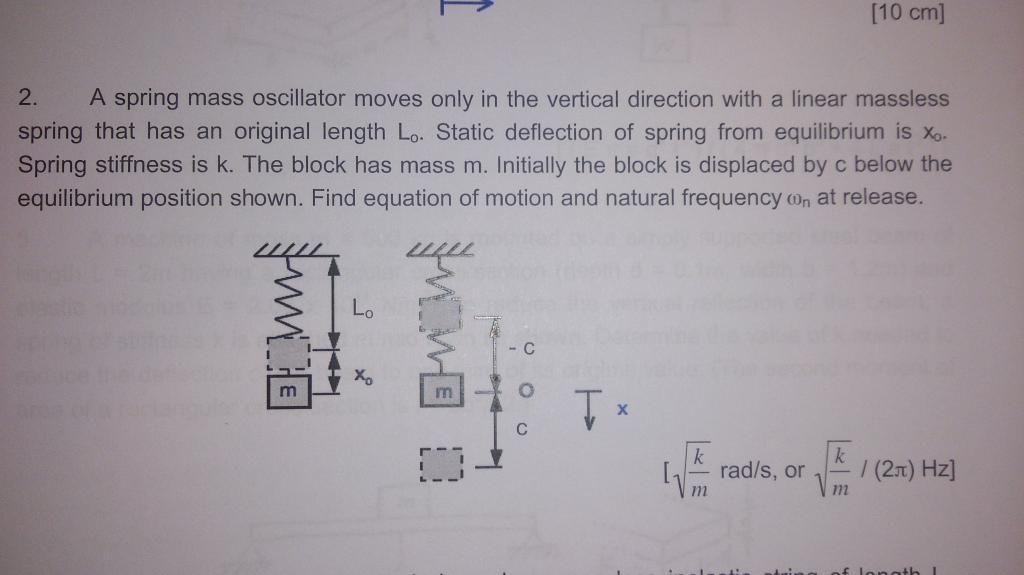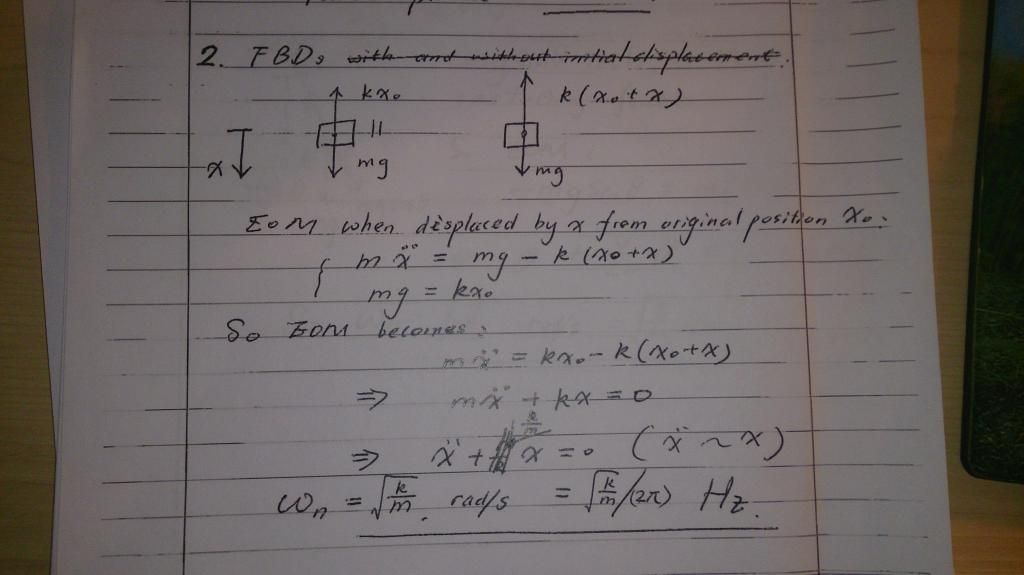I'm stuck. I have a question on simple harmonic motion and a solution to it, and I'm still stuck.
Basically, I can't get my head around how the solution is arrived at. It's just not going in/making sense.
Some fun pictures:
Relevant tutorial section (even with this I can't get my head around things)

Question

Solution

Can anyone explain/help me remember how this is done in steps? It seems like some of the working is missing from the solution, or that there is a gap in my knowledge that's not letting me fill in the blanks.
I knew I shouldn't have waited 2 years before topping-up to a degree. :/
Any assistance would be spiffing.
Basically, I can't get my head around how the solution is arrived at. It's just not going in/making sense.
Some fun pictures:
Relevant tutorial section (even with this I can't get my head around things)

Question

Solution

Can anyone explain/help me remember how this is done in steps? It seems like some of the working is missing from the solution, or that there is a gap in my knowledge that's not letting me fill in the blanks.
I knew I shouldn't have waited 2 years before topping-up to a degree. :/
Any assistance would be spiffing.


